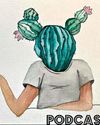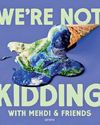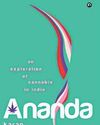
CIRCLING THE GLOBE as a travel writer, visiting almost 150 countries over about 20 years, I have seen a lot of remarkable things. I’ve stood in the basket of a hot-air balloon and watched herds of elephants crossing the Serengeti. I have travelled by helicopter in Antarctica to see humpback whales feeding in the frigid waters. I’ve been awestruck by the Taj Mahal in India, Machu Picchu in Peru and the Pyramids of Giza. I have even felt the last rays of a sunset fading over Cambodia’s Angkor Wat as I sat atop a temple.
But I have never, ever seen or experienced anything like the Gates of Hell, its flames dazzling from the bottom of the crater 30 metres below, lighting up the Karakum Desert with burning methane. My visit nearly a decade ago was an unforgettable experience.
That place is on my mind these days because it has been in the news recently. Darvaza, Turkmenistan’s famous flaming gas crater, is finally about to be extinguished, its polluting abyss plugged, hopefully forever. The country’s new president, Serdar Berdimuhamedov, announced that the United States is going to help his country do it for the good of the whole world.
The crater is in one of Turkmenistan’s two main gas fields, both of which are huge contributors to climate change. (Satellite data gathered on behalf of The Guardian shows that methane leaks from those fields caused more global heating in 2022 than all the carbon emissions of the United Kingdom.)
According to the United Nations Environment Programme, methane is responsible for more than 25 per cent of the global warming we are experiencing today; it traps more heat in the atmosphere per molecule than carbon dioxide (CO2), making it 80 times more potent than CO2, and for longer—20 years after it is released.
Diese Geschichte stammt aus der November, 2024-Ausgabe von Reader's Digest India.
Starten Sie Ihre 7-tägige kostenlose Testversion von Magzter GOLD, um auf Tausende kuratierte Premium-Storys sowie über 8.000 Zeitschriften und Zeitungen zuzugreifen.
Bereits Abonnent ? Anmelden
Diese Geschichte stammt aus der November, 2024-Ausgabe von Reader's Digest India.
Starten Sie Ihre 7-tägige kostenlose Testversion von Magzter GOLD, um auf Tausende kuratierte Premium-Storys sowie über 8.000 Zeitschriften und Zeitungen zuzugreifen.
Bereits Abonnent? Anmelden

ME & MY SHELF
Siddharth Kapila is a lawyer turned writer whose writing has focussed on issues surrounding Hinduism. His debut book, Tripping Down the Ganga: A Son's Exploration of Faith (Speaking Tiger) traces his seven-year-long journey along India's holiest river and his explorations into the nature of faith among believers and skeptics alike.

EMBEDDED FROM NPR
For all its flaws and shortcomings, some of which have come under the spotlight in recent years, NPR makes some of the best hardcore journalistic podcasts ever.

ANURAG MINUS VERMA PODCAST
Interview podcasts live and die not just on the strengths of the interviewer but also the range of participating guests.

WE'RE NOT KIDDING WITH MEHDI & FRIENDS
Since his exit from MSNBC, star anchor and journalist Mehdi Hasan has gone on to found Zeteo, an all-new media startup focussing on both news and analysis.

Ananda: An Exploration of Cannabis in India by Karan Madhok (Aleph)
Karan Madhok's Ananda is a lively, three-dimensional exploration of India's past and present relationship with cannabis.

I'll Have it Here: Poems by Jeet Thayil, (Fourth Estate)
For over three decades now, Jeet Thayil has been one of India's pre-eminent Englishlanguage poets.

Orbital by Samantha Harvey (Penguin Random House India)
Samantha Harvey became the latest winner of the Booker Prize last month for Orbital, a short, sharp shock of a novel about a group of astronauts aboard the International Space Station for a long-term mission.

She Defied All the Odds
When doctors told the McCoombes that spina bifida would severely limit their daughter's life, they refused to listen. So did the little girl

DO YOU DARE?
Two Danish businesswomen want us to start eating insects. It's good for the environment, but can consumers get over the yuck factor?

Searching for Santa Claus
Santa lives at the North Pole, right? Don't say that to the people of Rovaniemi in northern Finland